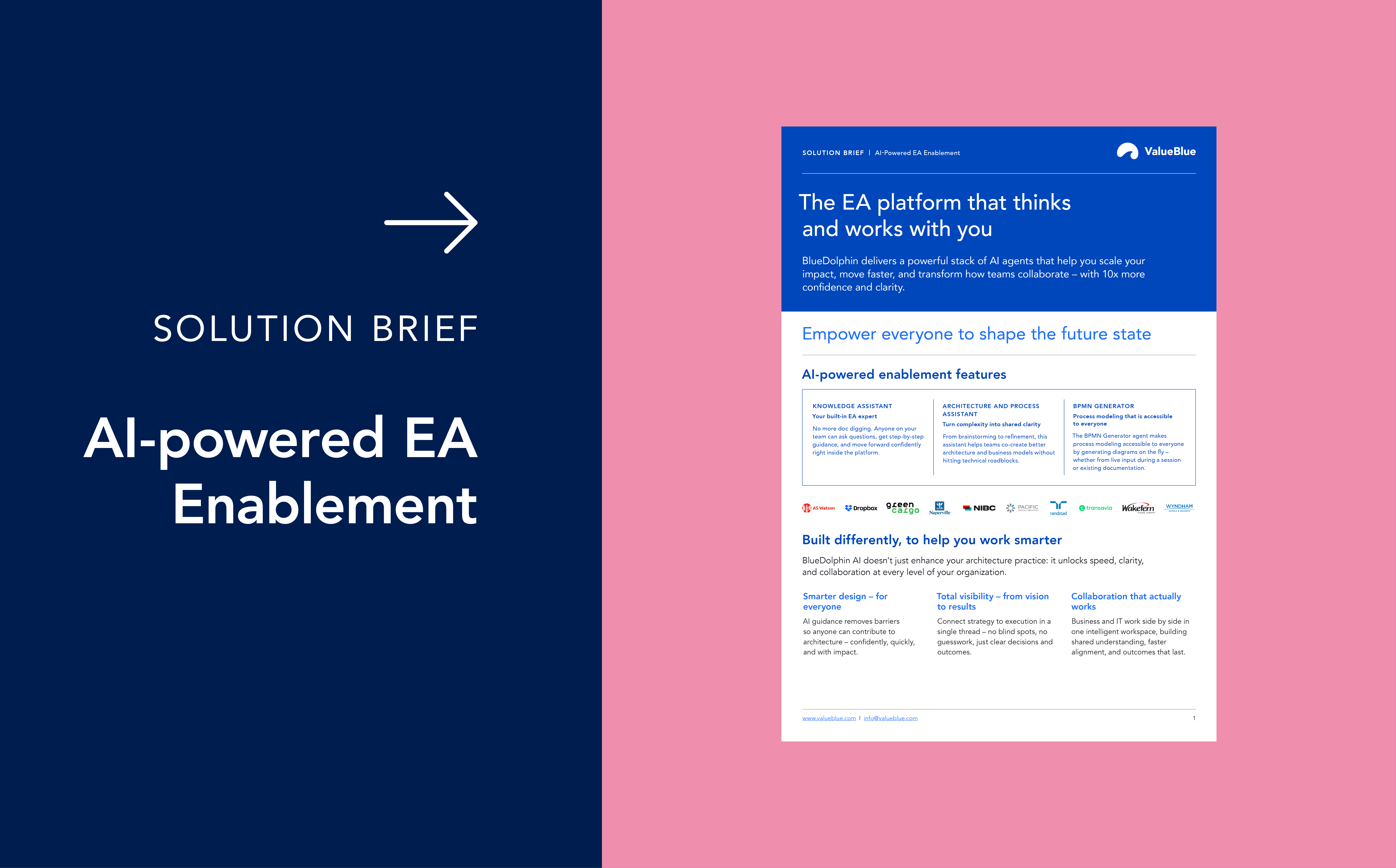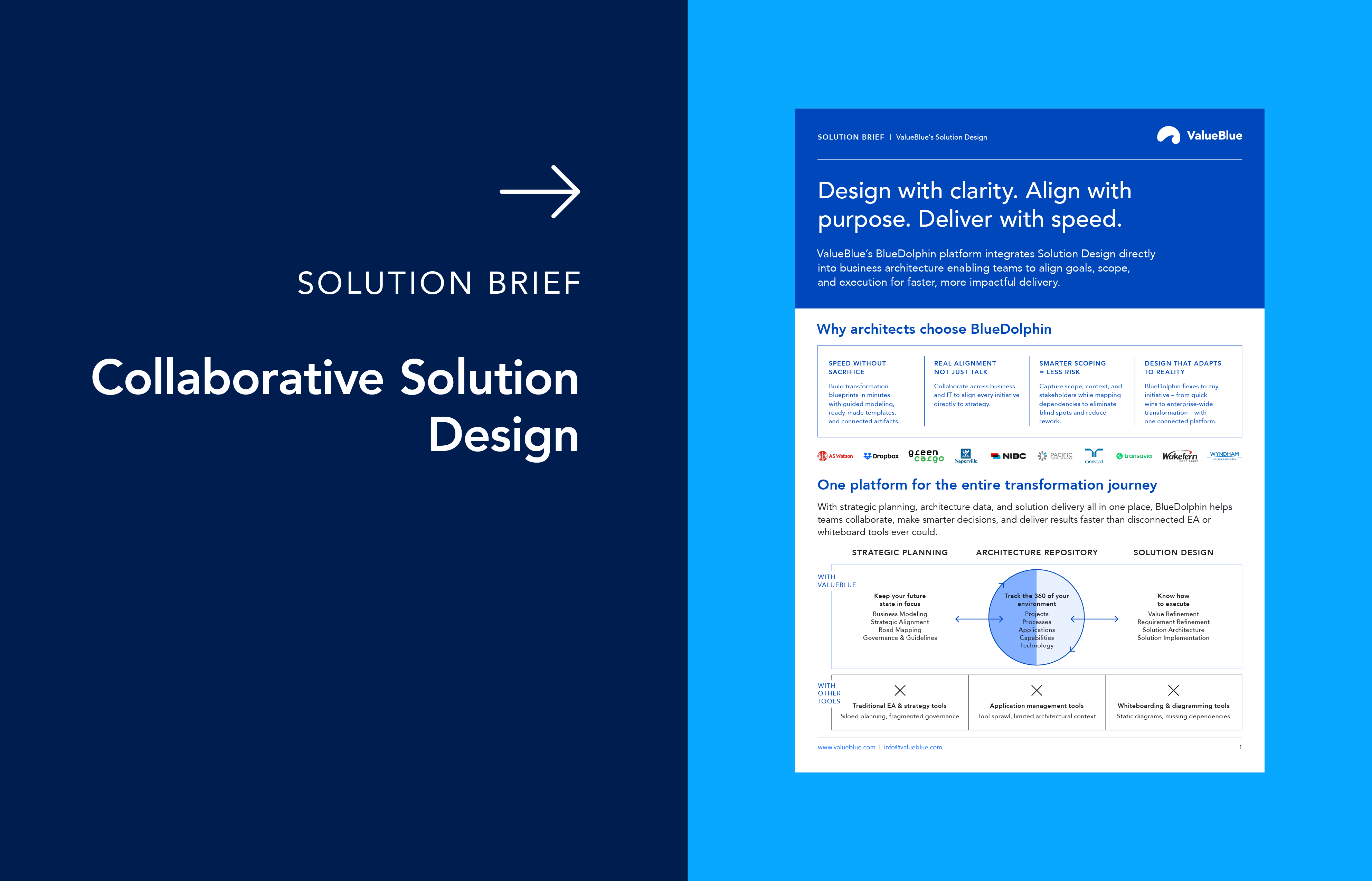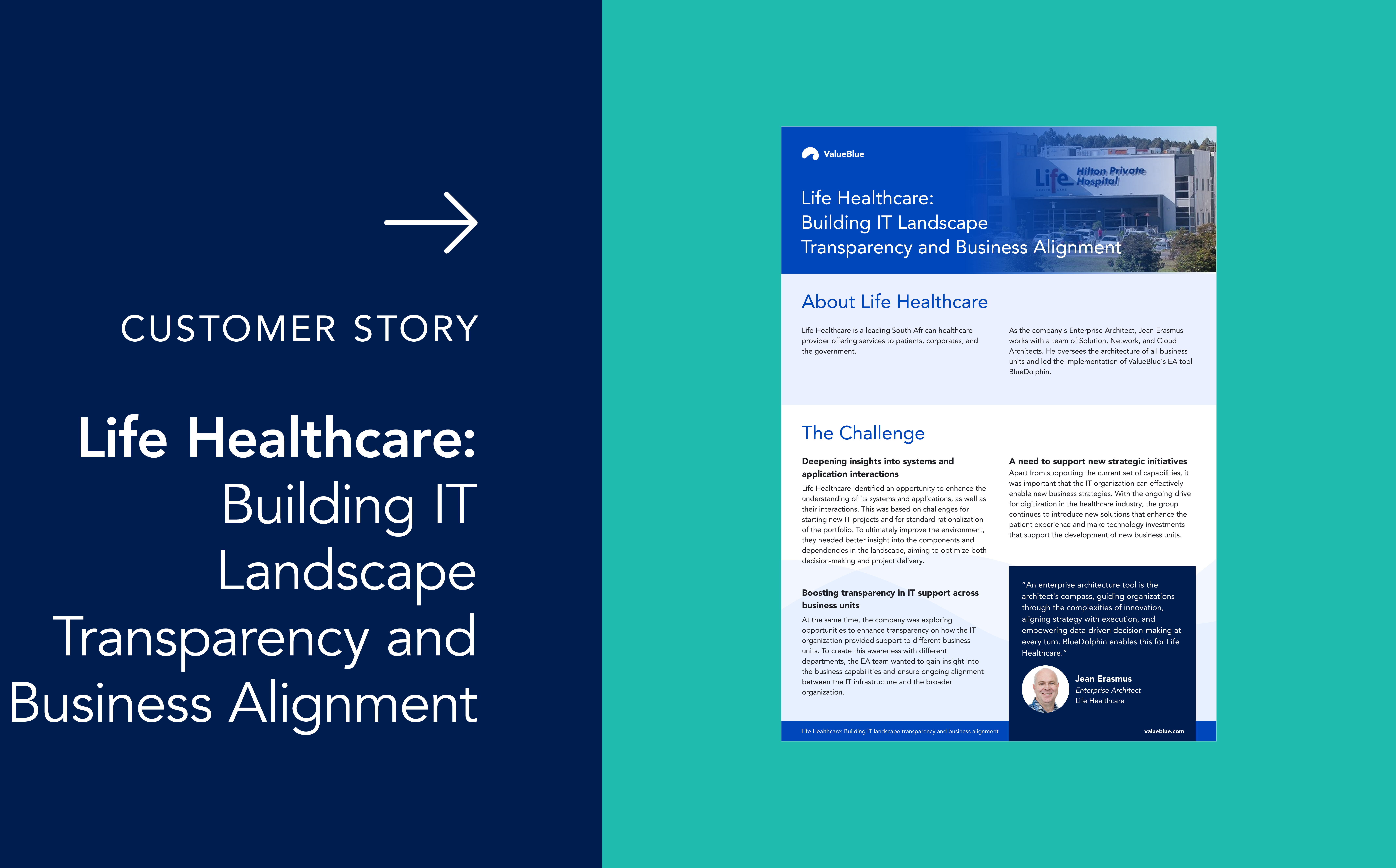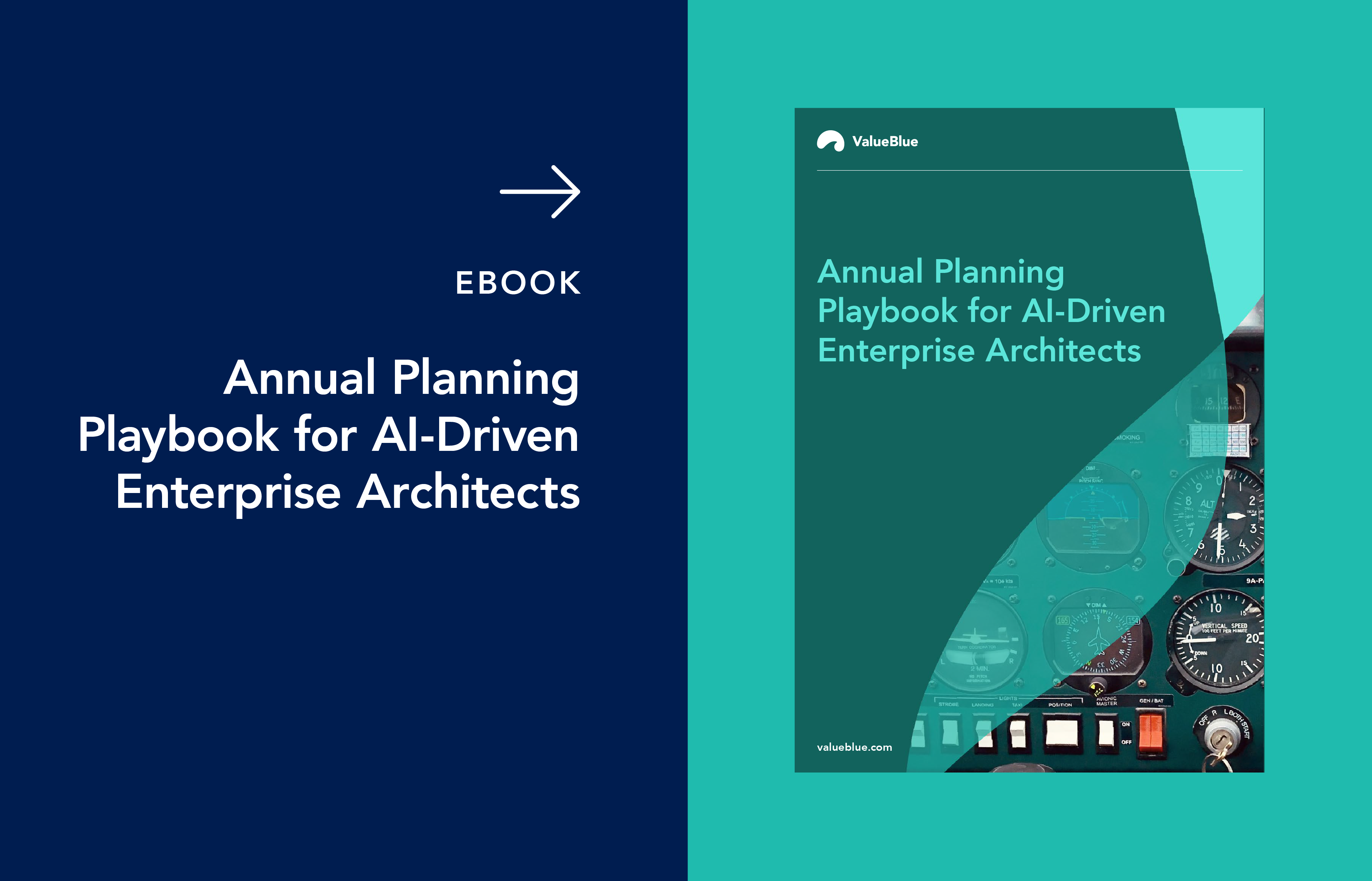Business Capability Map: Benefits and Best Practices
With rapid digitization, automation, and evolving customer demands, companies need to continuously transform their strategies and operations to remain competitive. But how can they best identify the areas that require transformation and spend their resources wisely?
Business capability mapping offers a structured approach to understanding how the business operates and how it can improve its value delivery in the future. As such, it helps answer business-critical questions, including:
- What are my core business activities that drive the strategy?
- Which of these do I need to invest in to remain competitive?
- How can I optimize my processes, applications, data, and technology to achieve this?
In this article, we’ll explore how to create a business capability map, its key benefits, and best practices for maximizing its impact.
What is a Business Capability Map?
A business capability map (or business capability model) is a visual representation of all the business capabilities within a specific business unit. It shows the complete range of activities a company performs to execute its strategy and achieve its objectives.
Example of a business capability map in the retail industry
By linking business capabilities to the architecture, organizations can understand exactly how their processes and technology support these goals. This also allows them to track their performance over time, assessing strengths, weaknesses, and areas for improvement.
Key Benefits of Business Capability Mapping
1. Improved performance and ROI
Capability maps break down the business into core areas. In other words, they illustrate which activities are essential for executing the strategy. This can help leaders decide which projects and actions to invest in for maximum business impact.
This type of planning helps leaders use resources more effectively, reduce costs, and improve innovation. In this way, capability mapping can help you achieve business goals and drive a greater return on investment (ROI).
2. Greater agility and competitive advantage
An organization’s architecture is a treasure trove of data, offering deep insights into every business layer. However, organizations may struggle to place these insights in a business context for long-term planning. By linking the architecture to business capabilities, they can clearly understand where the strengths, weaknesses, and opportunities lie—and how they affect business goals.
As the market evolves and new technologies emerge, they can continue to optimize the capability architecture to adapt quickly and stay ahead of the curve.
3. Streamlined communication
As the building blocks of the organization, business capabilities offer a common language for different stakeholders and departments. For instance, most business stakeholders will not understand the details of the IT landscape. However, they might understand the value of IT projects if they affect capabilities like “Customer Service” or “Financial Management”.
By using capability maps to communicate transformation initiatives, EA teams can improve collaboration and bridge the gap between business and IT.
Want to see how this works in practice? Book a short BlueDolphin demo.
Learn how you can use Business Capability Mapping in your transformation initiatives.
How to Create a Business Capability Map in 4 Steps
Here are some simple steps you can follow when creating your capability map.
1. Choose a starting point
To capture the entire business unit, you will ultimately want to map all capabilities. However, this is often a complex and lengthy task. Therefore, you might want to start by mapping key areas. If you're not sure where to start, consider the following:
- Which business capabilities are essential to the business (strategy)?
- Are there any ongoing projects that I should focus on?
If you’re still wondering where to start, you may be able to rely on industry standards or examples. Many industries have reference architectures that include topical business capability maps and descriptions you can leverage.
2. Collect existing information
Organizations are complex, and so are their capability maps. The good news is that there is often information already available. Try to collect any existing documentation, organizational charts, or business model canvases and adapt from there.
Gather information from various departments to ensure that your capability map reflects the business well. This will help you define the full scope of capabilities and understand their placement in the organization.
3. Separate core and supporting capabilities
Organizations may have dozens of capabilities that are vital for day-to-day operations, but not all of them are directly tied to value delivery. For this reason, organizations typically make a distinction between two sets of capabilities:
- Core capabilities are performed to provide services or products to customers. They are critical to a business’ performance and competitive advantage. Examples include ‘Customer management’ in the retail industry and ‘Innovation Management’ in the technology industry.
- Supporting capabilities maintain business operations but do not directly create value for customers or impact the business strategy. These include ‘Human resource management’ or ‘Finance and accounting’.
4. Create a hierarchical structure
Across both categories, there is often a large number of distinct yet interconnected capabilities. Therefore, it’s best to build your capability map as a hierarchy.
At the highest level, you should include the major activities or functions that the organization performs. You can then continue to include more detailed activities as you reach the lower layers. For example, if “Warehouse management” is a core capability, it can be broken down into sub-capabilities like “Physical inventory” and “Shipping and loading.”
Keep in mind, however, that including more detail is now always better. What is most important is that your capability map is useful and can help you reach your goals.
Best Practices for Building a Business Capability Map
1. Engage stakeholders early
Capability maps should accurately reflect the entire organization and should serve as a common language between different functions. To achieve this, you should involve key stakeholders from across departments, including business leaders, IT professionals, and functional managers.
A collaborative approach will help you capture the business's needs and realities and obtain buy-in. You can do this through interviews, discussions, and iterative feedback sessions. This inclusive approach fosters a sense of ownership and ensures that the map delivers its intended value.
2. Keep it simple and practical
Effective communication should not only be a tool for building but also a goal for utilizing your capability map. To achieve this, you should clearly visualize and define business capabilities in a straightforward manner.
As a first step, assign each one a meaningful name and clear description. Second, build your map using an intuitive and visual tool. This will help you edit and share this view in real-time with your selected stakeholders.
Lastly, consider which insights are relevant to the business to put into practice. Some examples include:
- How do new strategic goals affect the existing capabilities?
- How does data flow between related capabilities?
3. Consider the present, plan for the future
While it’s essential to reflect current needs when building your capability map, it’s also important to account for the future. As the market or the business strategy shifts, there will likely be a need to either build or adapt capabilities.
You should treat your capability as a living document that grows and adapts over time. Not as just a one-off project that you complete and set aside. Consistent updates and revisions will keep the map relevant and help the organization strategically plan new projects and transformations.
Using a Business Capability Map for Transformation Planning
Business and Enterprise Architecture (EA) teams often use capability maps to improve transformation planning. By offering a high-level, structured view of the business, the map can help them understand the current state and future growth areas. This enables leaders to identify investment areas and plan initiatives that enhance or develop capabilities to achieve transformation goals.
Enterprise Architecture (EA) plays a key role in this process. By mapping and evaluating the capability architecture, enterprise architects can identify and design the required changes to reach transformation goals. This includes several key steps:
Tactical Planning
Tactical planning involves assessing relevant capabilities to identify gaps and potential improvements to the current landscape. This assessment may address the maturity, health, or other performance metrics of the capability.
Strategic Planning
Strategic planning includes aligning capabilities with business goals to either enhance existing ones or identify opportunities for building new capabilities. This process results in a future-state architecture designed to achieve long-term strategic objectives.
Solution Design
By analyzing strategic needs and the existing infrastructure, architecture teams can design both high-level and detailed solutions to reach goals. This includes an overview of the business requirements and detailed application, technology, and business process designs.
Business Capability Mapping: A Smart Path to Transformation
In a constantly changing landscape, capability mapping gives organizations the structure and direction to drive strategic decisions. It connects objectives and operations, highlights where to invest, and enables focused and measurable transformation.
Explore our eBook, “Business Capability Mapping: Strategies for Transformation Planning,” for a more detailed approach to transformation planning using business capabilities.
Book a demo
Explore how you can design and align your transformation initiatives more effectively - from strategy to execution.
Have questions about Enterprise Architecture best practices?
Our experts are happy to help.





